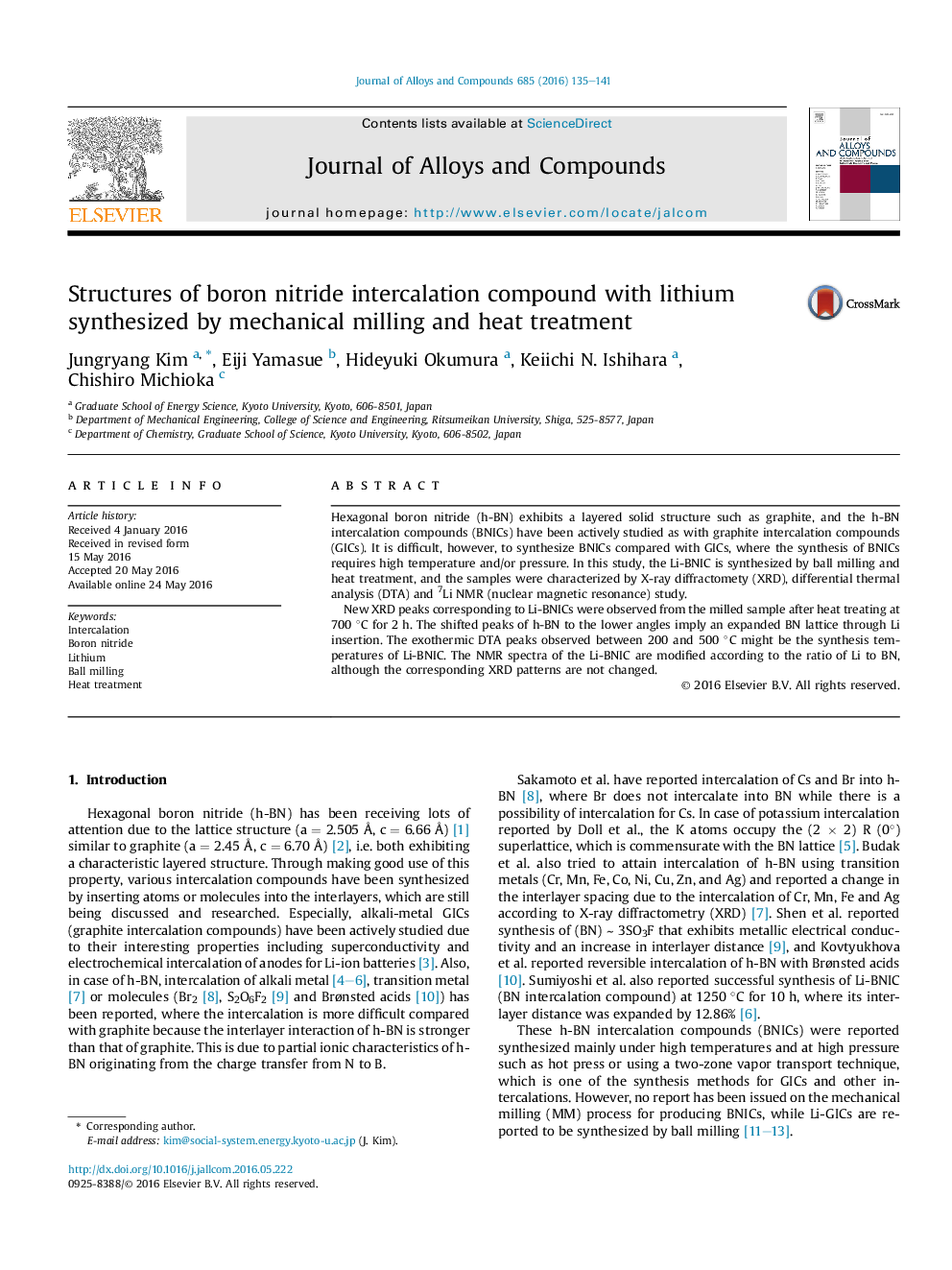| Article ID | Journal | Published Year | Pages | File Type |
|---|---|---|---|---|
| 1605007 | Journal of Alloys and Compounds | 2016 | 7 Pages |
•Lithium boron nitride intercalation compound is synthesized by the sequential process of ball milling and heat treatment.•The structures are studied by X-ray diffractomety, 7Li nuclear magnetic resonance and the Rietveld analysis.•Inserting Li atoms into hexagonal BN exhibits consistent lattice expansion regardless of the Li/BN ratio.•The intercalated Li atoms exhibit two-dimensional irregular arrangement in the Li-BNIC structure.
Hexagonal boron nitride (h-BN) exhibits a layered solid structure such as graphite, and the h-BN intercalation compounds (BNICs) have been actively studied as with graphite intercalation compounds (GICs). It is difficult, however, to synthesize BNICs compared with GICs, where the synthesis of BNICs requires high temperature and/or pressure. In this study, the Li-BNIC is synthesized by ball milling and heat treatment, and the samples were characterized by X-ray diffractomety (XRD), differential thermal analysis (DTA) and 7Li NMR (nuclear magnetic resonance) study.New XRD peaks corresponding to Li-BNICs were observed from the milled sample after heat treating at 700 °C for 2 h. The shifted peaks of h-BN to the lower angles imply an expanded BN lattice through Li insertion. The exothermic DTA peaks observed between 200 and 500 °C might be the synthesis temperatures of Li-BNIC. The NMR spectra of the Li-BNIC are modified according to the ratio of Li to BN, although the corresponding XRD patterns are not changed.
